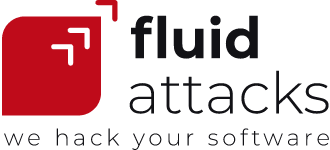| 5 min read
Assume you set out to check and download your visa through the corresponding federal agency website in a country where you’re a foreigner. Then, amid your curious behavior, to your surprise, you realize that you can do something you are not supposed to be able to do on that website. It turns out that you can see and download many other people’s visas just by making a small change at the end of the URL. What do you think you should do in this kind of situation? To whom should you tell this, assuming, of course, that you do not intend to be a cybercriminal?
Well, such a scenario was recently faced by a foreign individual who was about to check his visa (i.e., identification document as a foreigner) on the Colombian electronic visa platform. According to the Colombian news website La Silla Vacía (LSV) on Twitter, it was on January 13 when this citizen with a fresh opportunity to work in this South American country discovered the platform’s issue. Specifically, this man could access a link through a QR code attached to his digital visa. And, from there, by changing the final numbers of that link, he could see and obtain not just his but other people’s visas on PDF without any restriction.
Perhaps this citizen hadn’t the foggiest idea of the magnitude of the snag. An estimated 550,000 people had their data in that vulnerable information system at that time. Therefore, from any of them, our individual could obtain data such as the following: photograph, full name, date of birth, nationality, passport number, and job position. By the way, would this man actually be the first to notice this pitfall? How long ago did this vulnerability exist? Days, months? Questions with no answers shared publicly so far, it seems.
Anyway, following up on what was communicated on Twitter by LSV, our individual in question decided to write emails to the embassy, from where he got no solution, and then to the Ministry of Foreign Affairs, to receive no response. How the hell could that be possible? Okay, I forget for the moment that slow request processing is easy to find in the bureaucracy almost anywhere. Afterward, the individual allegedly initiated communication with LSV, and they were able to witness the security weakness on the electronic visa platform.
That day, January 15, these journalists, apart from doing so on social networks, published on their website 'EVERYTHING' that was known so far about the issue. What did they do with their reckless conduct? They brought Christmas early for many malicious hackers, chiefly in Latin America. LSV revealed a cybersecurity vulnerability for which there was no implemented solution at that time. Though censoring URLs and people’s information, they gave a gif showing the platform error. Were they not aware of the harm they could be doing? Or were they just hurriedly thinking about their profits as a media outlet? Again, unanswered questions.
Nevertheless, LSV communicated by chatting the imbroglio to the appropriate authorities at the Ministry. This entity then said to LSV that it would soon remediate the vulnerability and, hours later, published a terse official bulletin on the subject (see image below). However, it seems they did not suggest LSV remove the posts that were not far from looking like cybercrime incentives. Data that by law is supposed to be protected was at the mercy of many cunning individuals with obscure intentions of committing frauds such as identity theft and extortion. The next day (I don’t know how much time they disabled the platform service), the Technology Directorate closed the breach, and the Ministry distributed a new bulletin, only one sentence long.

Taken from cancilleria.gov.co.
How many attackers could have taken advantage of this vulnerability? What image of Colombia’s national security does this event provide to foreigners? Are there similar problems in this government’s systems (using the same technology) that have not been solved? Engaging questions, although I would like to keep focused on the vulnerability reporting issue at this point.
As Oakley for GlobeLiveMedia said, some other people were also rejecting the publication by LSV. I repeat: they could have been calling for cybercrime! Their behavior was not appropriate or judicious in terms of disclosing an IT system vulnerability. However, before that, our individual should not have gone beyond failed communication with a couple of authorities to share his findings with a journalistic group. As suggested by Rafael Alvarez, Fluid Attacks' CTO, this man should have tried repeatedly to establish a conversation with the Ministry. Finding no response or being ignored, his next step should have been to contact an intermediary, such as the police.
Or, in his possible ignorance of what to do, why not resort to Google? This individual could easily have found the colCERT website, where people in Colombia can report cybercrime and related incidents. (Although, for example, Carolina Botero, director of the Karisma Foundation, disqualifies this site for the appropriate reporting of vulnerabilities.) However, already in the hands of the media, continually looking for traffic generation, we could hardly expect responsible handling of this kind of data. "Unfortunately —as Rafael said—, the search for fame by newspapers or pseudo-hackers always takes prisoner the common good, which in reality is what matters most here." LSV should have transmitted the event to the authorities and then waited long enough for the problem to be resolved before publishing the story. Those affected had to be informed in detail later, but mainly by the organization responsible for their data storage.
Reading the ISO/IEC 29147:2018 (about which I may emphasize more on a future occasion), a standard concerning 'vulnerability disclosure,' we find the following: "The goal of vulnerability disclosure is to reduce the risk associated with exploiting vulnerabilities." Reduce the risk! In the end, in this case, none of the parties involved succeeded in doing so. It is real that the Ministry made a mistake with its IT infrastructure that kept the data of thousands of foreigners on exposure. But, for their part, the journalists made the situation public, conveying an implicit message: these people are in deep trouble, but it doesn’t matter if they get screwed even more; the right to information (and our recognition) must be above other principles.
Finally, as Rafael said, opportunities for improvement for organizations such as the Ministry arise in cases like this one where there were technical or methodological security failures. It is also true that companies responsible for their security should pay more attention to the management of reports and the implementation of standards (see ISO’s 'IT Security'). In general, we could overcome the lack of knowledge on vulnerability reporting with, for instance, what Botero recommended: the establishment of an easily accessible state-coordinated disclosure channel for the secure and transparent transmission of information.
If you find yourself in a situation similar to that of the aforementioned foreign citizen, do not forget the following: (1) Accessing third parties' sensitive data is a crime. (2) There are intermediaries such as the police who can help. (3) Social networks are not the right place to report a vulnerability. On the other hand, all of us should strive to be more aware of the harm our actions can cause to others. That would be a good start to respond to some signs of unheeded moral principles.
Share
Recommended blog posts
You might be interested in the following related posts.











